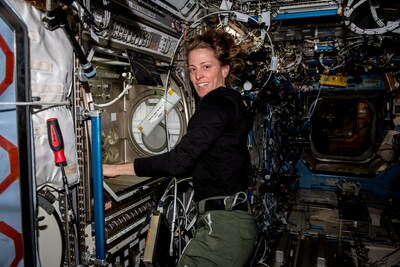NASA Sets Science Webinar Coverage for Space Station Resupply Mission
WASHINGTON, March 7, 2024 /PRNewswire/ — In preparation for NASA’s SpaceX 30th commercial resupply mission, the agency will stream an International Space Station National Lab science webinar at 1 p.m. EST Friday, March 8, to discuss the hardware, technology demonstrations, and science experiments headed to the space station.
NASA will provide coverage of the webinar on the agency’s website.
SpaceX is targeting no earlier than mid-March to launch its Dragon cargo spacecraft on top of a Falcon 9 rocket from Space Launch Complex 40 at Cape Canaveral Space Force Station in Florida.
The science webinar will include the following participants:
- Heidi Parris, associate program scientist, NASA’s International Space Station Program
- Davide Marotta, science program director for in-space biomedicine, ISS National Laboratory
- Marc Elmouttie, research group leader, Commonwealth Scientific and Industrial Research Organization
- Paula Grisanti, CEO, National Stem Cell Foundation
- Kris Kuehnel, managing director, Space Exploration Operations, Airbus U.S. Space & Defense
- Michelle Lucas, founder and CEO, Higher Orbits
- Hema Ramkumar, founder and CEO, Oculogenex
- Jordan McKaig, graduate student, Georgia Institute of Technology
To participate in the event, members of the media must register for access by 12 p.m., March 8 at:
SpaceX’s Dragon will deliver new science investigations, supplies, and equipment for the international crew, including tests of technologies to monitor sea ice, automate 3D mapping, and create nanoparticle solar cells.
Cargo resupply by U.S. companies increases NASA’s ability to conduct more investigations aboard the orbiting laboratory. Those investigations lead to new technologies, medical treatments, and products that improve life on Earth. Other U.S. government agencies, private industries, and academic and research institutions can also conduct microgravity research through our partnership with the International Space Station National Laboratory.
Humans have occupied the space station continuously since November 2000. In that time, 279 people and a variety of international and commercial spacecraft have visited the orbital outpost. It remains the springboard to NASA’s next great leap in exploration, including future missions to the Moon under the Artemis campaign, and ultimately, human exploration of Mars.
For more information about commercial resupply missions, visit:
https://www.nasa.gov/commercialresupply
![]() View original content to download multimedia:https://www.prnewswire.com/news-releases/nasa-sets-science-webinar-coverage-for-space-station-resupply-mission-302083577.html
View original content to download multimedia:https://www.prnewswire.com/news-releases/nasa-sets-science-webinar-coverage-for-space-station-resupply-mission-302083577.html
SOURCE NASA





 Private Internet Access gives you unparalleled access to thousands
of next-gen servers in over 83 countries and each US state. Your
VPN experience will always be fast, smooth, and reliable.
Private Internet Access gives you unparalleled access to thousands
of next-gen servers in over 83 countries and each US state. Your
VPN experience will always be fast, smooth, and reliable.
